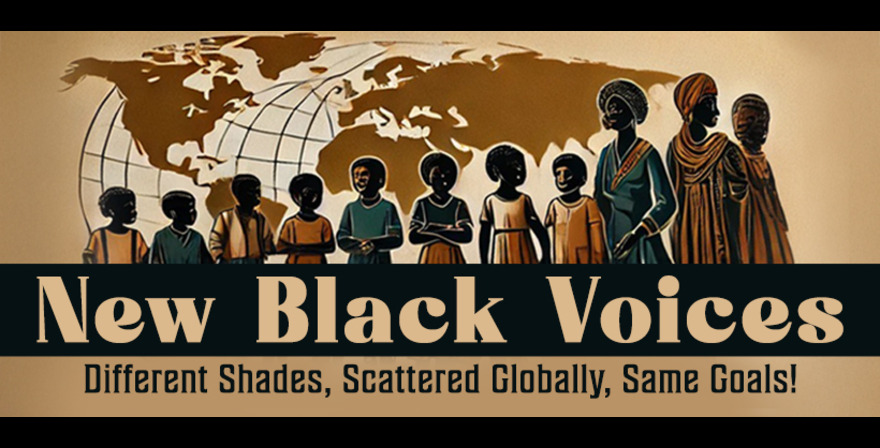By Sandy Connors
The Business of “Brighter”
$8.8 billion. That’s the estimated global
value of the skin bleaching industry as of 2022, according to Global Industry Analysts. By 2026, it’s projected to grow to over $11.8 billion. These numbers aren’t just market data—they’re evidence of a thriving industry built on selling insecurity.
From creams and pills to dangerous injections, skin lightening products are aggressively marketed across Africa, the Caribbean, South Asia, and diaspora communities. These products are peddled with euphemisms: “fairness,” “brightening,” “radiant skin.” But what they truly promote is something far more dangerous—internalized racism.
“In Nigeria alone, 77% of women report using skin-lightening products,”
—World Health Organization (2022)
Psychology of the Bleach
Skin bleaching is often dismissed as vanity. In truth, it’s a coping mechanism for generational trauma. Mental health experts link bleaching to body dysmorphic disorder, low self-esteem, and depression—conditions triggered by growing up in colorist societies.
In a study by the Journal of Black Psychology, users of bleaching products reported significantly higher levels of anxiety and self-rejection. Many began bleaching as teens, influenced by teasing, family favoritism, or societal standards that painted dark skin as a disadvantage.
“I didn’t want to be white—I just didn’t want to be me.”
—Anonymous bleaching user, BBC Africa interview
“Colorism isn’t just an aesthetic issue. It’s a form of emotional colonization.”
—Dr. Nia Kingston, Cultural Psychologist
Love and the Light Skin Bias
Romantic relationships are not immune. Studies show that lighter-skinned individuals are more likely to be seen as attractive, educated, and marriageable.
A 2019 international dating app survey found lighter-skinned profiles received three times more matches than their darker counterparts. This pressure drives many people to bleach in pursuit of affection or status, leading to relational imbalances, deceit, and anxiety over being “exposed.”
Men are also entering the market. In Uganda, 28% of men surveyed admitted to trying bleaching agents, citing dating and job competition as key motivators.
Inheriting Insecurity: Impact on Children
When parents bleach—especially mothers—they communicate that dark skin is a problem. Children who observe this internalize shame, believing they must conform to the same aesthetic to be loved or accepted.
In Trinidad and Tobago, a 2022 survey found 40% of teens with bleaching parents had experimented with lightening products themselves. In these homes, colorism becomes generational—passed down not by genes, but by trauma.

Self-love, not self-erasure: breaking the generational cycle of bleaching.
Risking Skin—and Life
Beyond the emotional toll, bleaching is often physically dangerous. Many products contain hydroquinone, mercury, or corticosteroids—chemicals banned or heavily restricted in multiple countries.
Known side effects include:
- Skin thinning and irreversible discoloration
- Organ damage (liver, kidney)
- Increased skin cancer risk
- Mercury poisoning
Despite this, the market remains unregulated in much of the world. The World Health Organization has called for stricter enforcement and awareness, but enforcement lags behind consumer demand.
Resistance: A Shade Reclaimed
In defiance of these trends, cultural resistance is rising. Hashtags like #MelaninPoppin and #BlackIsBeautiful are not just aesthetic statements—they’re healing tools. They affirm that dark skin is not a flaw but a feature worth celebrating.
In Jamaica, artist campaigns now educate schoolchildren about colorism. In Ghana and Rwanda, governments have banned products with dangerous ingredients. Meanwhile, influencers across platforms are reclaiming dark-skinned beauty.
“Our skin isn’t something to fix. It’s something to honor.”
—Amara L., Caribbean beauty influencer
Healing Beyond the Surface
The skin bleaching crisis is not just about beauty products—it’s about the psychological residue of colonization, the economics of self-hate, and the search for social safety through erasure. It damages self-worth, corrodes families, and warps romantic standards.
But change is possible. Through education, regulation, and cultural reprogramming, we can dismantle the systems that reward lightness and punish authenticity.
The most radical thing a person of color can do in a bleaching world?
Love the skin they’re in. Not just for themselves—but for those still learning how.
- Global industry value: $8.8 billion (2022) → $11.8 billion (projected 2026)
- Countries with highest usage: Nigeria, India, Jamaica, the Philippines
- Health risks: Mercury poisoning, organ failure, skin cancer
- Psychological effects: Body dysmorphia, anxiety, self-loathing
- Teen impact: 40% of Caribbean teens with bleaching parents try it themselves

